Empirical Exercise 10: Discrimination
1/14
There's no tags or description
Looks like no tags are added yet.
Name | Mastery | Learn | Test | Matching | Spaced |
|---|
No study sessions yet.
15 Terms
question, hypothesis, theory
Question: whether employers discriminate against african american individuals in the job market, even when they have same qualifications as white applicants
Do minority workers with same skills as white counterparts find it more difficult to get job offers
Hypothesis: applicants with black su=oudning names receive fewer callbacks than those with white sounding names, indicating discrimination
Theory: Employers may have personal preferences (biases) against hiring African Americans, regardless of their qualifications
population models
-lwage is the log of wage
-employ is a dummy that takes value 1 if the individual is employed
-black is a dummy that takes value 1 if the individual is African American
-educ is the years of education and exp is years of experience
why will panel data in this stduy not sork
-cannot study the effect of race in first differences equation as individuals don’t change race from one year to another
-example of first differences equation but since black2 - black 1=0, equation won’t contain race so cannot use to study effect of being black on lwage/likelihood of being employed
-cannot use a fixed effects model as variable whether an individual is black or not will be collinear with the fixed effects variable
-fixed effects variable will include things that change between individual to individual but don't change over time a so will include race so cant have both variables im your model
data: type of experiment, steps, variables
Field experiment: researcher (or rather the CVs that he is sending) is interacting with real economic agents in the real world
these types of studies score quite high in terms of identification, which is provided by the randomness of the interaction
Have to run an experiment where you randomly assign race to group: will help you get unbiased estimate of beta 1: which measures effect of discrimination
Go online and find online CVs posted on job search websites: so they are realistic and representative of real job seekers
Restrict to Boston/Chicago area, and certain types of jobs ef accountancy, customer service, administrative
remove any identifying info eg name, and contact info etc
Classify within each occupations category into high and low quality CVs using criteria like experience skills, gaps in employment
Generate identities for fictitious job applicants eg names, telephone addresses
Choose stereotypically black and white names for each racial group: names for white men and women eg emily, carrie, geoffrey for white men and women and jamal, hakim, aisha for black men and women
Allocate same phone number to CVs with same race, gender, quality to monitor employer callbacks and use real streets dresses in boston and chicago
Find ads asking applicants to mail resume and send send 4 CVs to each company that is in job ads: 1 high + low quality black, 1 high + low quality white CVs
-dependent variable: callback in logs
-independent: race indicator black=0/1 or resume quality high=0/1
why do we not need multiple regression
-black-sounding and white-sounding names are allocated randomly to the CVs
-Other CV characteristics (other than the name) that may influence the attractiveness of a candidate to an employer are in the error term
-we have seen these other characteristics eg years of experience skills etc are uncorrelated with the variable black as diff in means was not significant
-one of the conditions for the existence of omitted variable bias breaks down, and we can find causal (i.e. unbiased) estimates of the effect of being perceived as black on the call back likelihood

-likelihood is 50%: high quality resumes not more likely to be associated with white vs black names
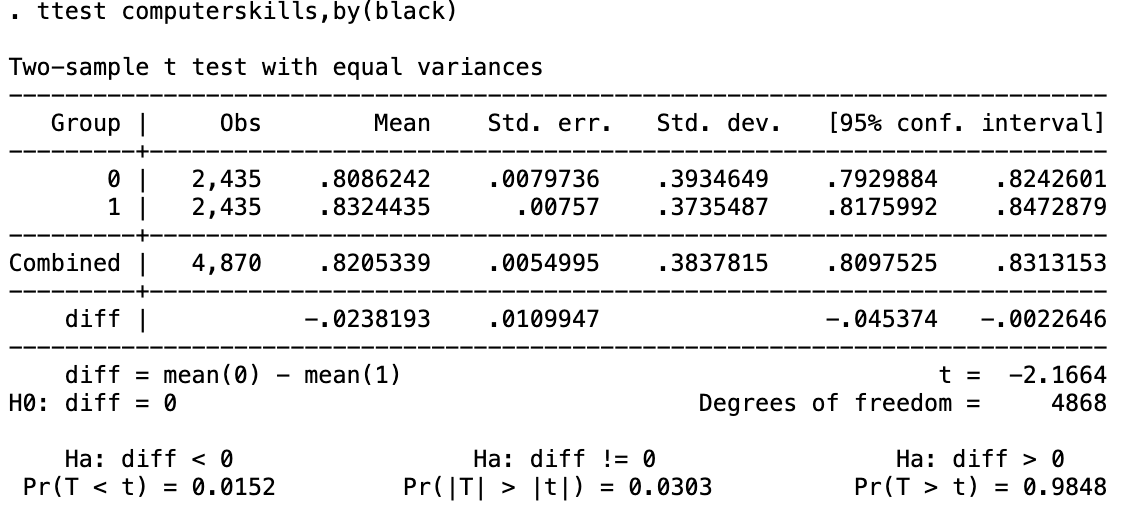
black applicants likelihood of having computer skills is 83%
diff in computer skills betw white and black statistically significant at 5% level
-tested other skills like yrs of experience, no of jobs, employment gaps, all diff not significant, only diff between black and hwite is computer skills
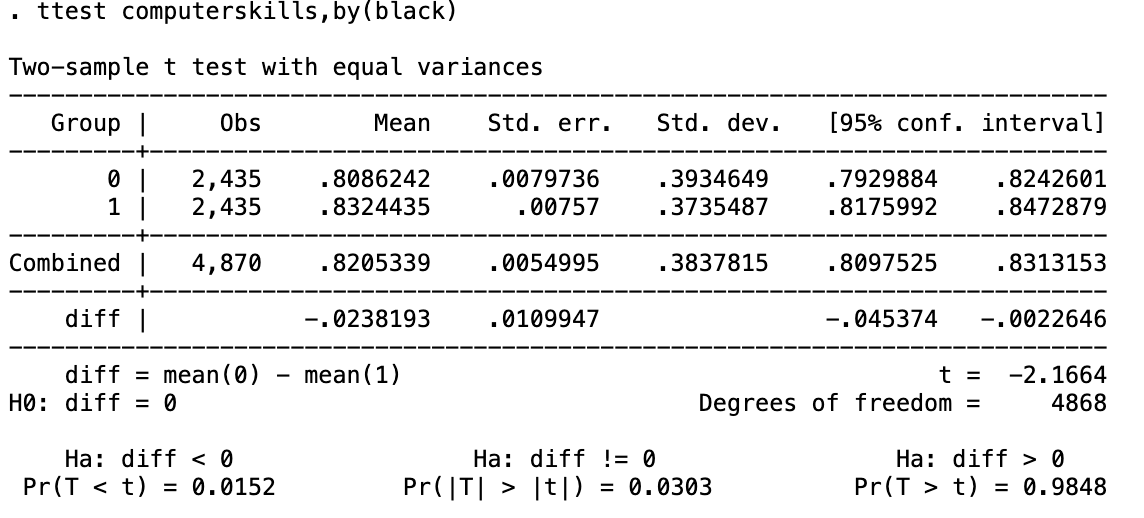
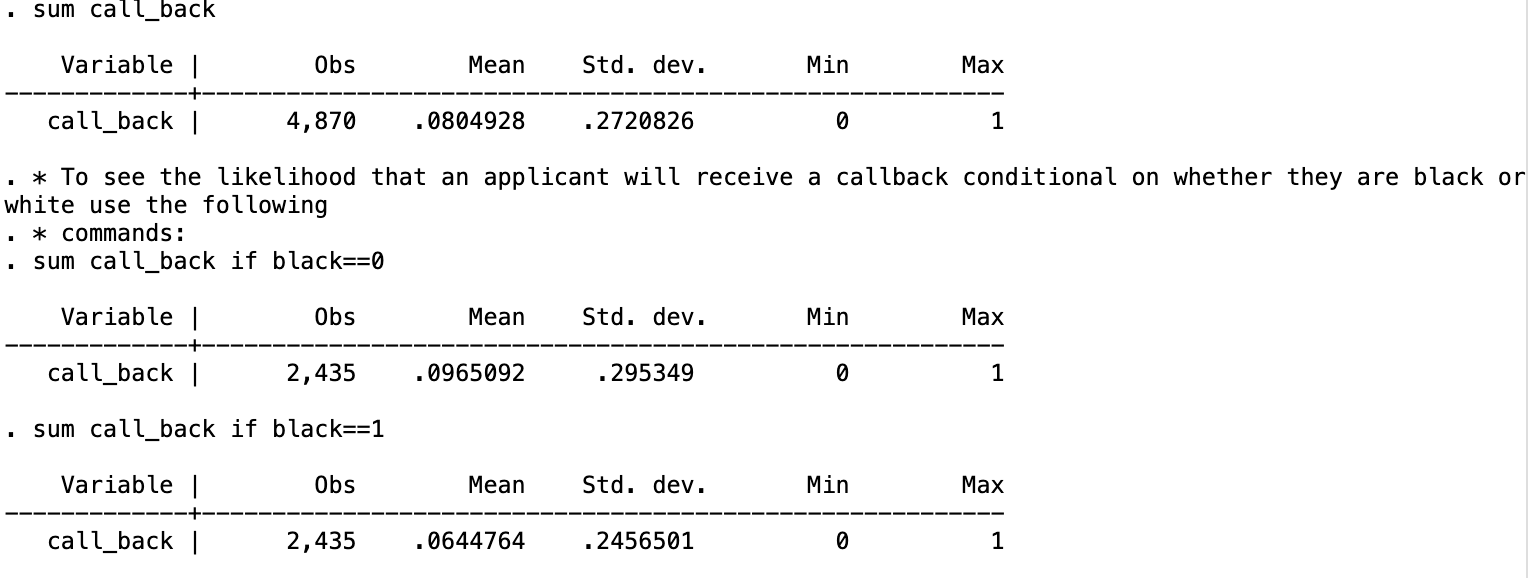
unconditional callback rate regardless of race is 8.04%
-comparison of means test to compare conditional callback rate
white applicants likely to be called back 9,65%
black applicants call back is 6.4%
white applicants 50% more likely to be called back vs black applicants
-employers discriminating against equally skilled black applicants
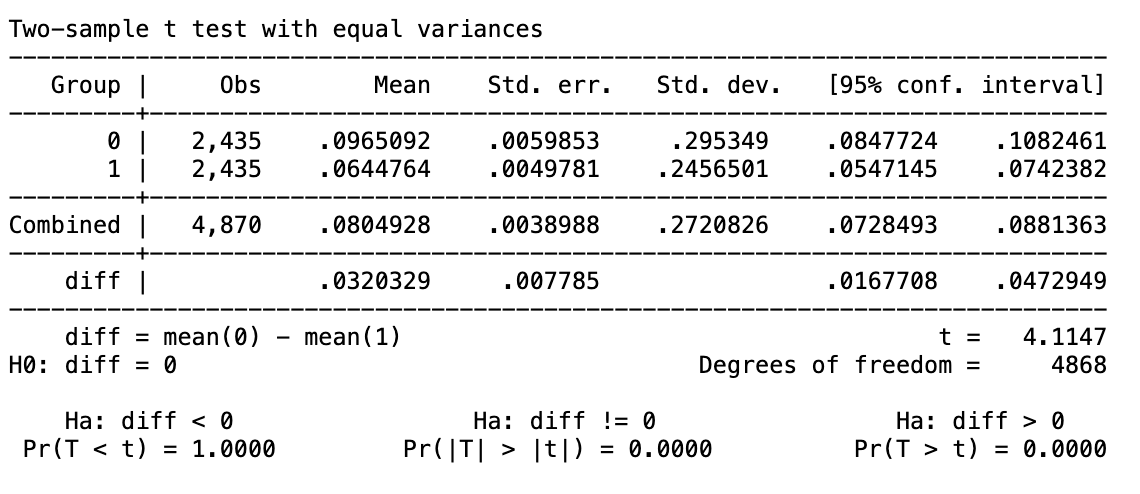
-simple regression of callback on black to see if diff is statistically signif
-intercepts coincide with likelihood of receiving call for blacks + whites
-t stat: 4.11 and p value significant
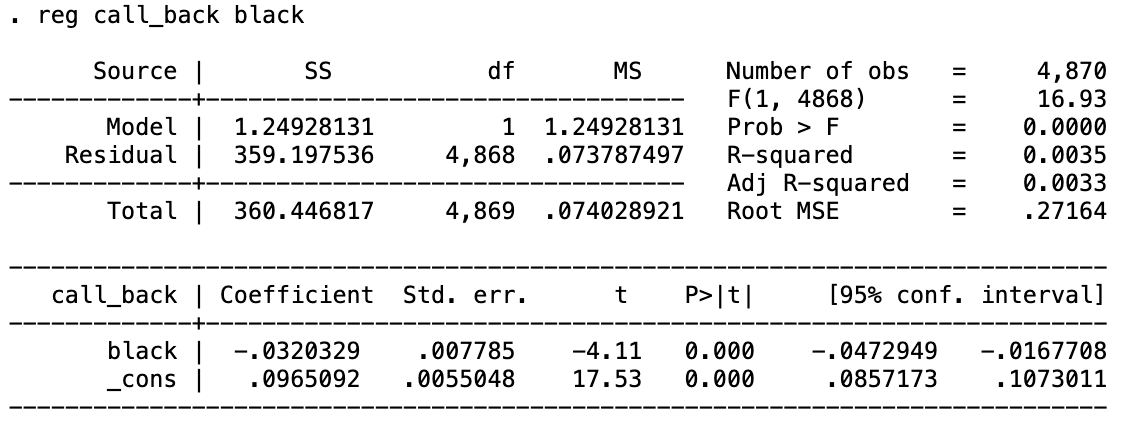
slope = -0.032 so being black decreases call back rate by 3.2%
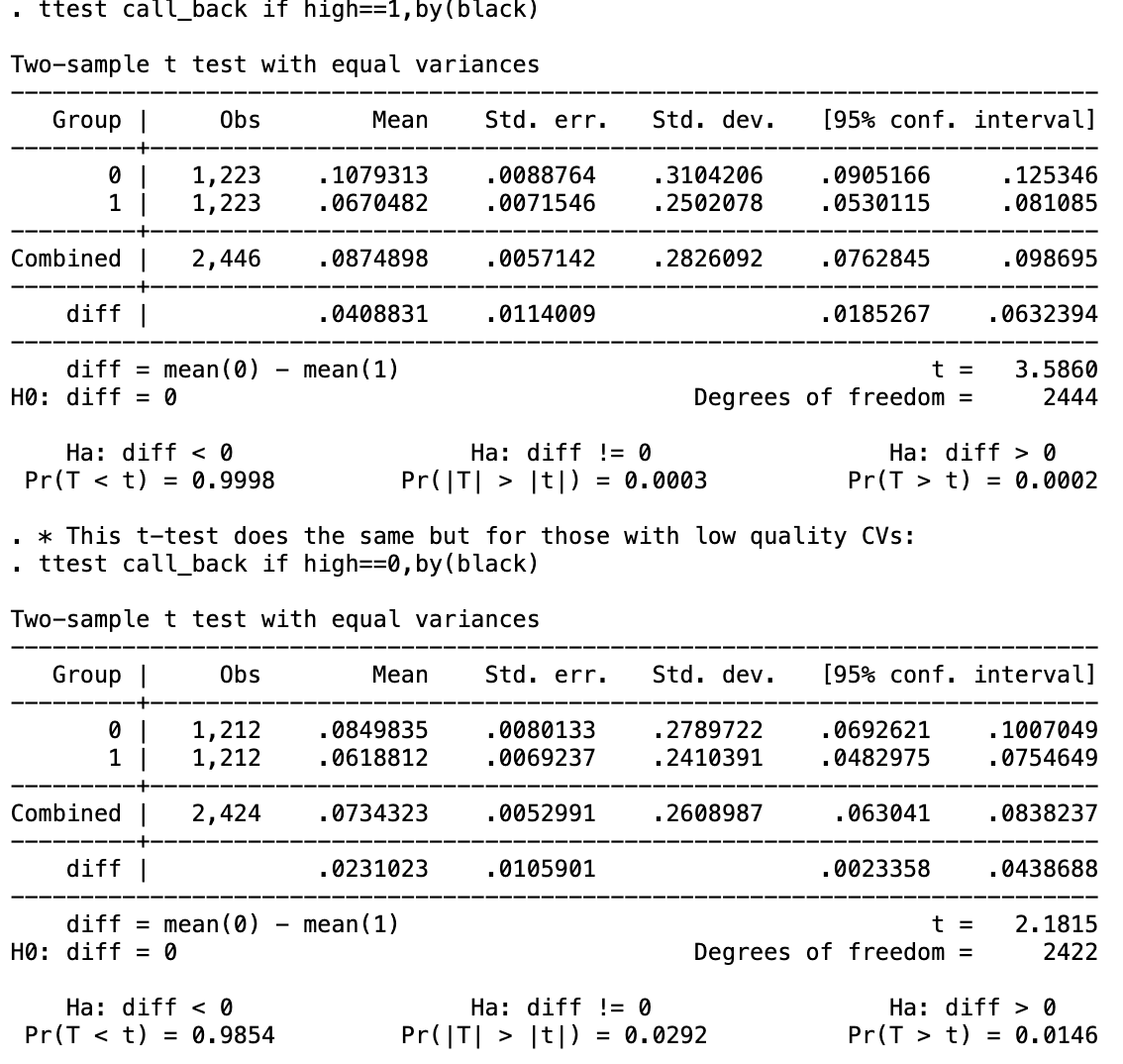
-testing callback rates of high quality and low quality applicants
-high quality applicants receive more calls if they are white than if they are black: 10.7% vs 6.7%: significant p value
-low quality applicants receive more calls if white vs black 8.5% vs 6

-black applicants do not receive more calls if they are high quality vs low quality applicants: 6.7% vs 6.1%, p value is not significant
no incentives for black individuals to improve CVs and education
-white applicants do receive more calls if high quality vs low quality 10.7% vs 8.4%: p value is significant at 10% level
internal validity
randomized field experiment where identical resumes are assigned either Black- or white-sounding names.
This random assignment ensures causal identification: any difference in callback rates can be attributed to perceived race: removing any correlation that can be linked to race of worker
Observable and unobservable characteristics (except the name) are held constant, minimising omitted variable bias.
Statistical tests confirm randomness of allocation (e.g., equal distribution of resume quality across race groups)
external validity
-context may not be representative as most jobs are located in boston
-more racially diverse cities like chicago might have less racial discrimination so not true for all cities located in the US, and in other studies
-study was conducted 20 years ago
-newspaper ads only one channel for finding employment, african americans could be using other social networks differently than white americans
-doesn't study whether blacks suffer discrimination in the workplace, which could cause them to quit/lose their jobs
-discrimination is based on name only, there may be other differences between
-observing causal effect of racially sounding name rather than being black
-test employer perception: employers do not observe race directly but receive a perception of race through names
-only measuring callback rate, not necessarily mean there is less likelihood of getting employed, we only observed race plays a factor in getting an interview, don’t necessarily know if this translates to them getting employed or not
measurement error in employer eprception
-may be measurement error between whether a person is perceived to be black and whether they are actually black
-e is measurement error
-red is attenuation bias
-reduce e, fraction will get closer to 1 so beta one hat will be closer to true beta 1
-true effect may be underestimated
- if employer doesn’t perceive name, not an issue as it attenuates estimated coefficient
-if there are photos of the person of whether the person is black or white, there would be a reduced measurement error, closer to the true effect so employers more likely to discriminate